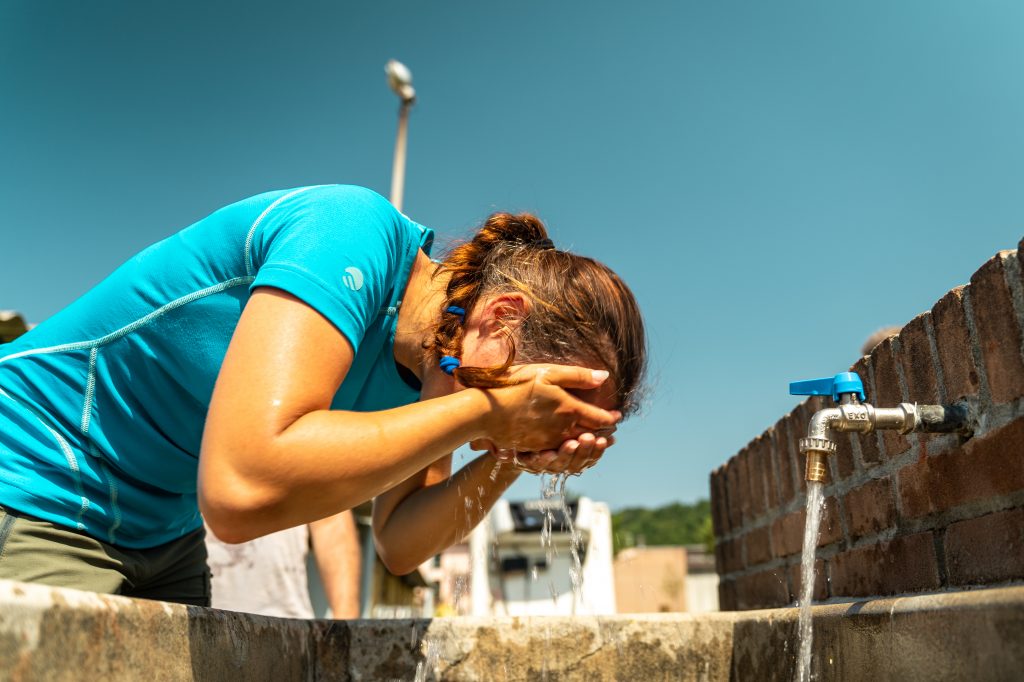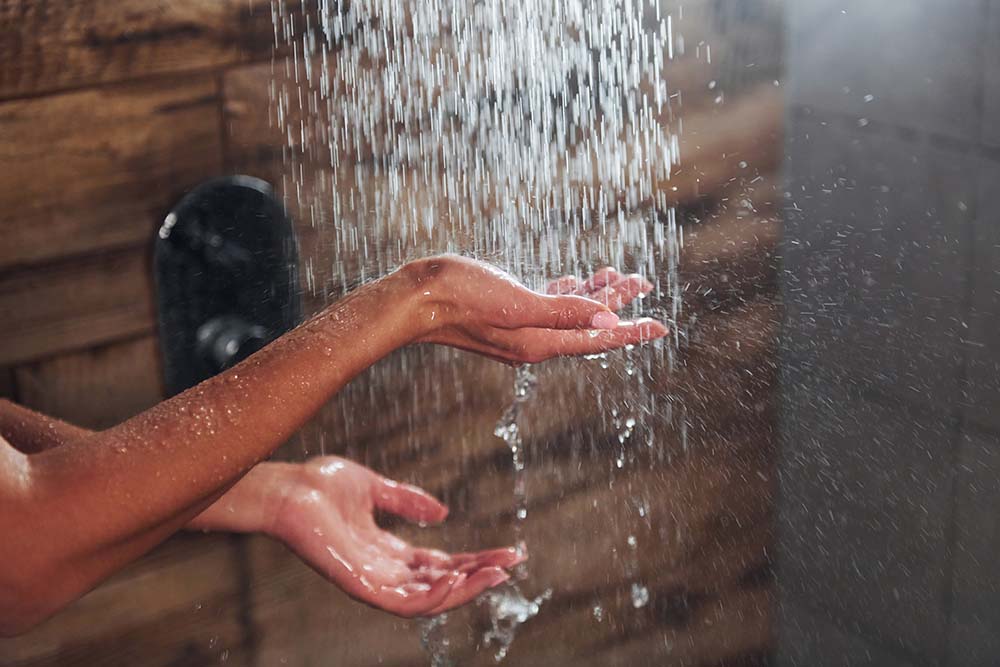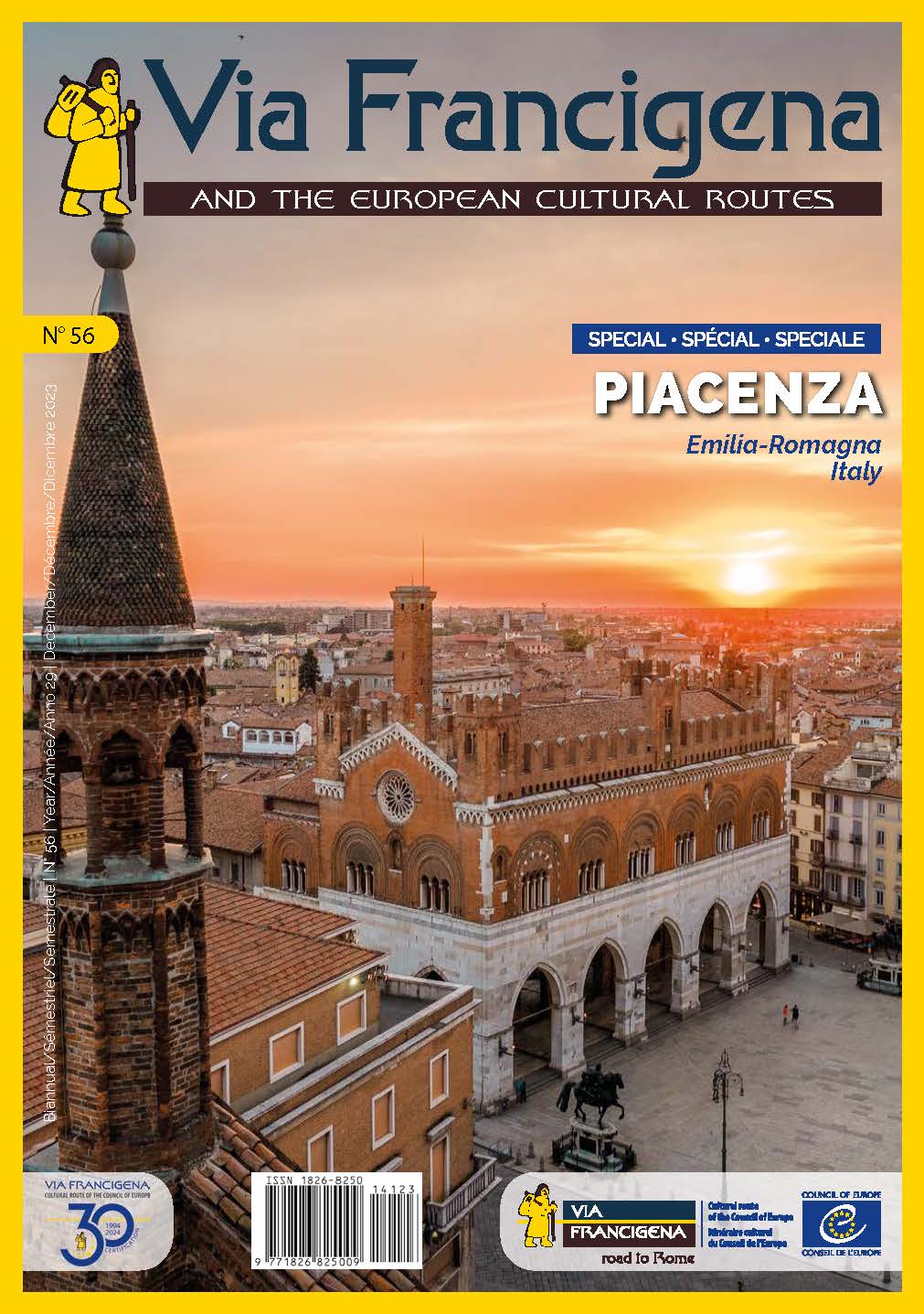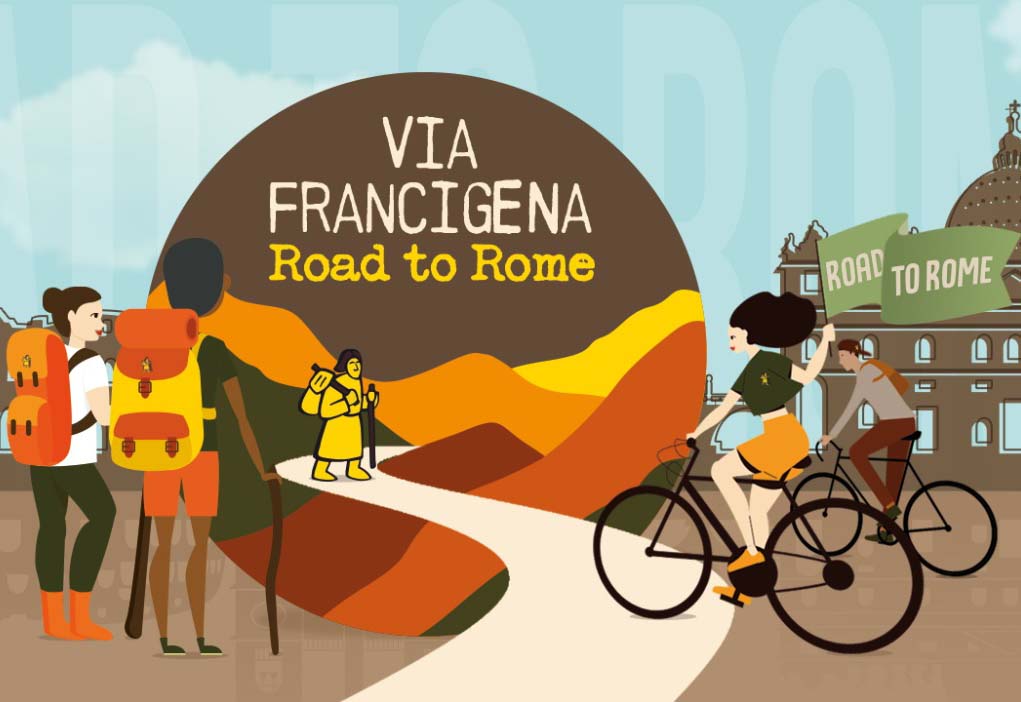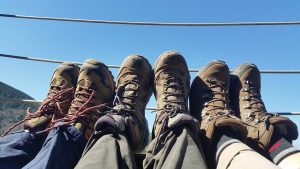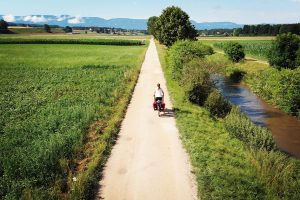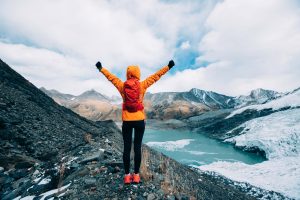I’m a fervent believer that all actions count, no matter how small. And that, if we want to contribute to a better world and make change happen, it’s important to look first of all at the choices we make in our own lives. I personally cannot stand people who say “ok but even if I make this change, it won’t really make an impact because so many other people don’t do the same thing and therefore my small action doesn’t really count”. I believe it does count, and that many bigger changes start small, from the roots up.
The choice to spend a week (or more) walking or cycling along the Via Francigena instead of taking an airplane to a popular holiday destination is a sustainable one in and of itself. But did you know that with some (small) adjustments it can become even more green? Below you’ll find some of my tips on how to make your Via Francigena adventure even more sustainable.
Table of Contents
Reusable water bottles
It goes without saying that disposable plastic water bottles are among the most polluting products out there on the consumer’s market. When you buy water in a bottle you pay mostly for the bottle instead of the water, financing the petrol industry and keeping this big polluting market intact. In many countries however water can be easily drunk from the tap, and this is definitely the case for the countries along the Via Francigena. Maybe the water won’t always be as tasty as from a bottle, but don’t be fooled: many bottled waters aren’t as good for you as you think! Some are filtered too much, while others still contain a very high amount of fixed residue. And last but definitely not least: disposable plastic water bottles can release toxic substances into the water, especially when heated by the sun, which then end up in our bodies when we drink it.
More than enough reasons to always travel with reusable water bottles, preferably insulated ones to keep your water cool during the warm (summer) months. And remember, it’s important to regularly wash your reusable water bottle to prevent bad odours or algae growing inside.
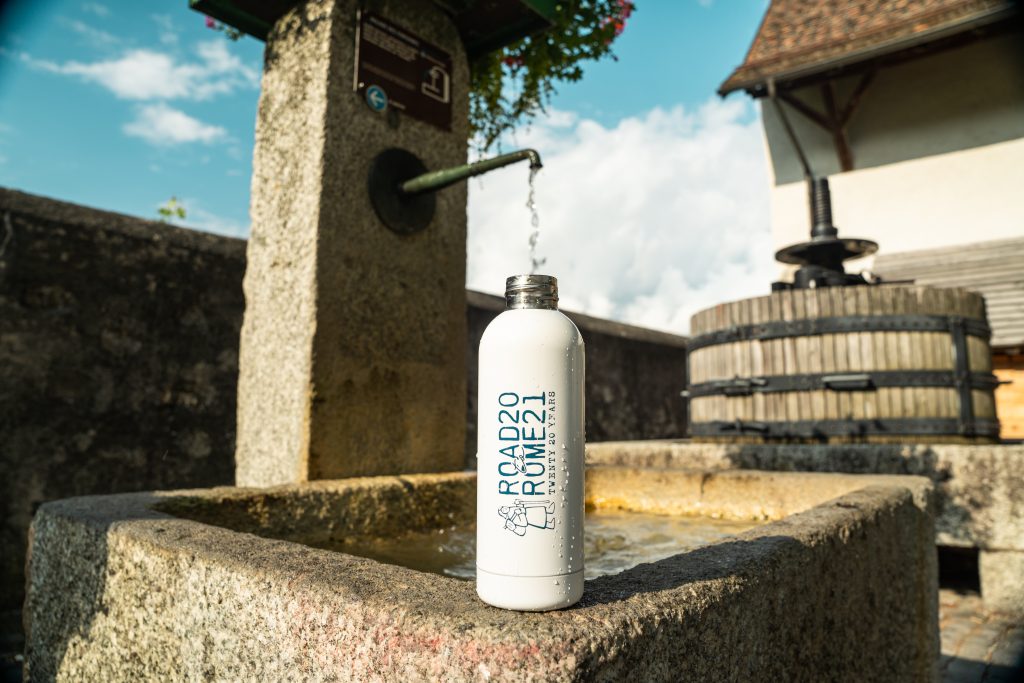
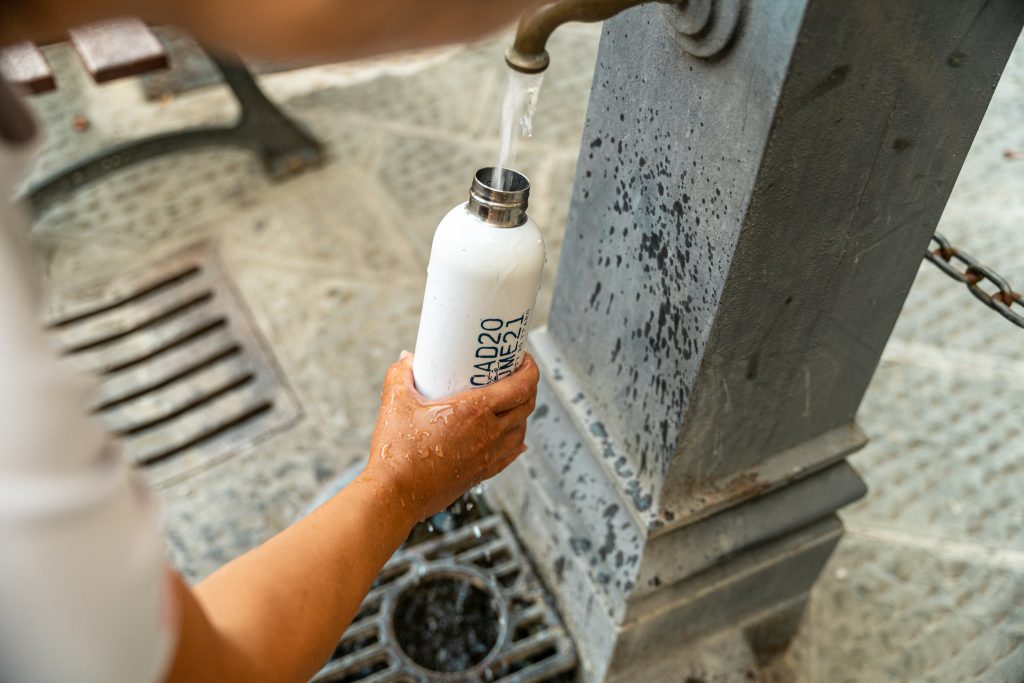
Solid shampoo and soap
I’ve started using solid shampoo, soaps, and other personal hygiene products about 5 years ago, and I cannot begin to imagine how much plastic waste I have already avoided using and throwing away in this period. But I’m sure it comes down too many, many kilos. We are so used to buying our personal hygiene products in plastic packaging, to seeing our supermarkets and drugstores filled with these liquid products that it has become a normality for us. We don’t consider it weird or a problem, and as a result many people continue to buy these products on a regular basis, with empty packaging more often than not ending up in big landfills, waiting to be either burned or simply left there to “rot”.
If you think about it, a high percentage of what you’re actually buying with these liquid products is simply water. If you take out the water and leave only the active “ingredients”, you are left with a small, concentrated bar of soap or shampoo that can be easily packaged in (recycled) paper. And because of their low weight and tiny volume, these solid products are perfect for slow travel adventures such as the Via Francigena. As I’ve said before, I’ve been using these solid little friends for many years now and I would never go back to their plastic counterparts. I also feel lighter mentally not having to throw out all that plastic trash each week, and it simply feels good knowing that I’m contributing in my very own, small way, to creating just a little less plastic waste with each solid shampoo bar I buy.
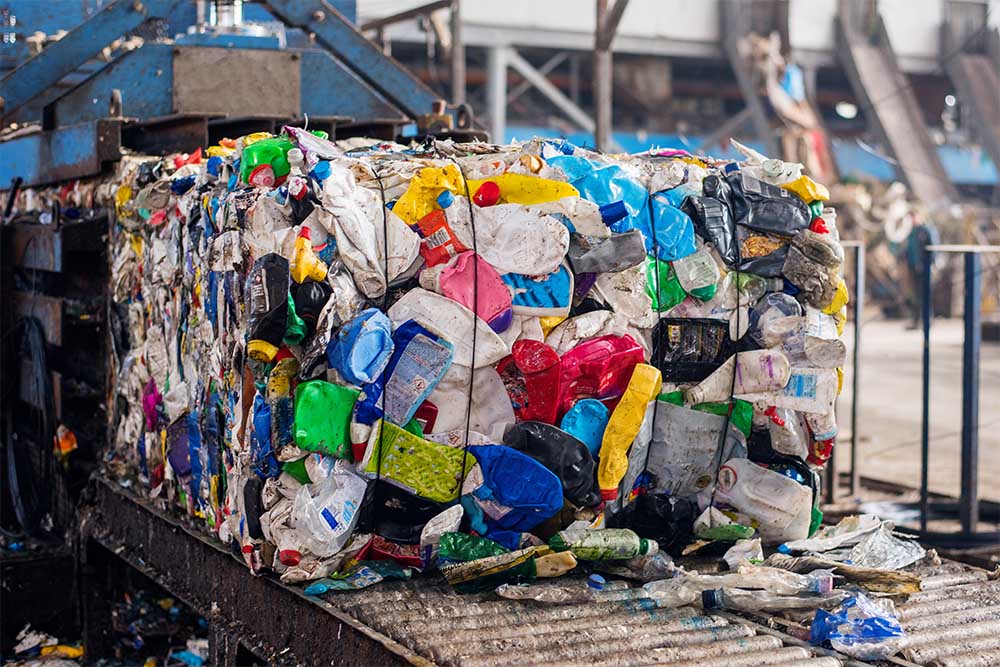
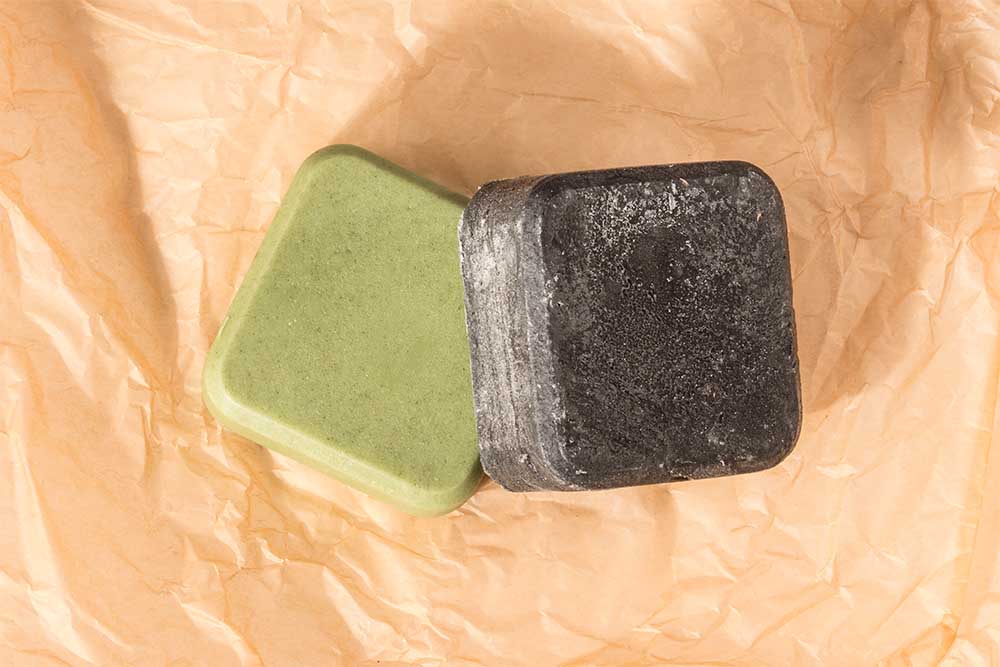
Are your hiking boot soles completely worn out? Repair them!
There’s nothing worse than having to substitute your hiking shoes when they’re perfectly broken in and super comfortable on any type of terrain, only because the soles have started to lose their grip. If in these cases your boots are still in good shape, without holes and able to withstand various meteorological situations, I highly recommend finding a good shoemaker and asking him to replace the consumed sole with a brand new one. This way you’ll be able to enjoy your favourite hiking boots much longer, you contribute to the reuse, repair & recycle principle, and it will cost a lot less than buying a brand-new pair of hiking boots. Of course, this is true only when you are in between hikes. If instead you are out on the road and all of a sudden your hiking shoes break down (a classic problem is the sole detaching from the shoe), make sure to always have some duct tape with you to fix the problem temporarily until you can get a more permanent fix. Sometimes this will mean buying a brand-new pair of hiking boots, because we all know that no pair of shoes is eternal, but sometimes there are other fixes available that will keep you going strong for many more kilometres to come.
Needless to say that if you invest in a good pair of hiking shoes instead of a cheap alternative, they last much longer and will usually be much more comfortable for your feet. Take for example the hiking shoes of EAVF’s partner Garmont that offers a special 20% discount for Via Francigena pilgrims.
➡️ Click here to grab your 20% discount on a pair of Garmont shoes
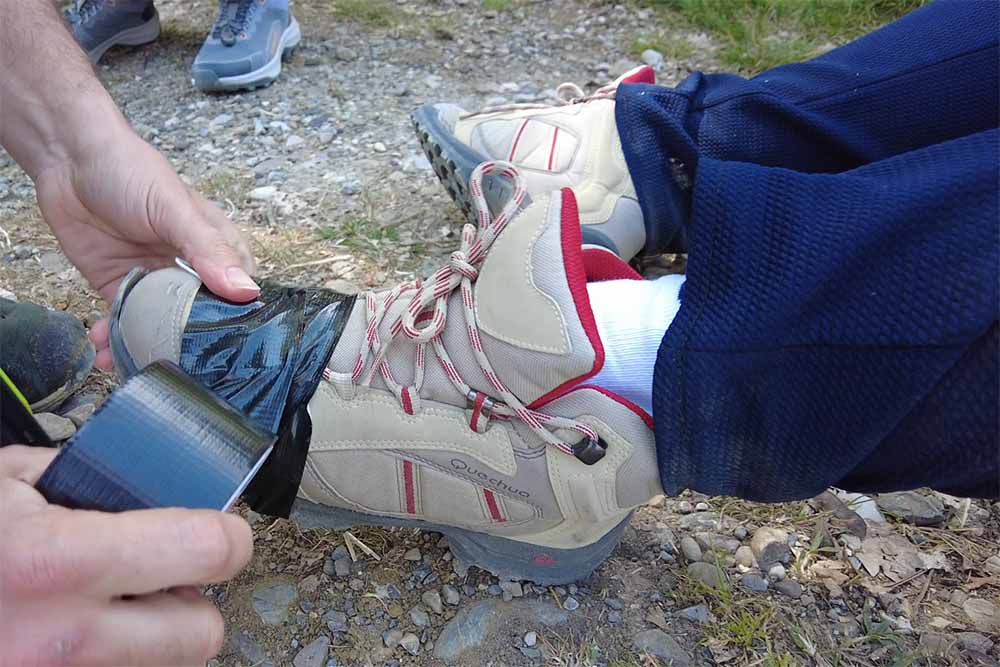
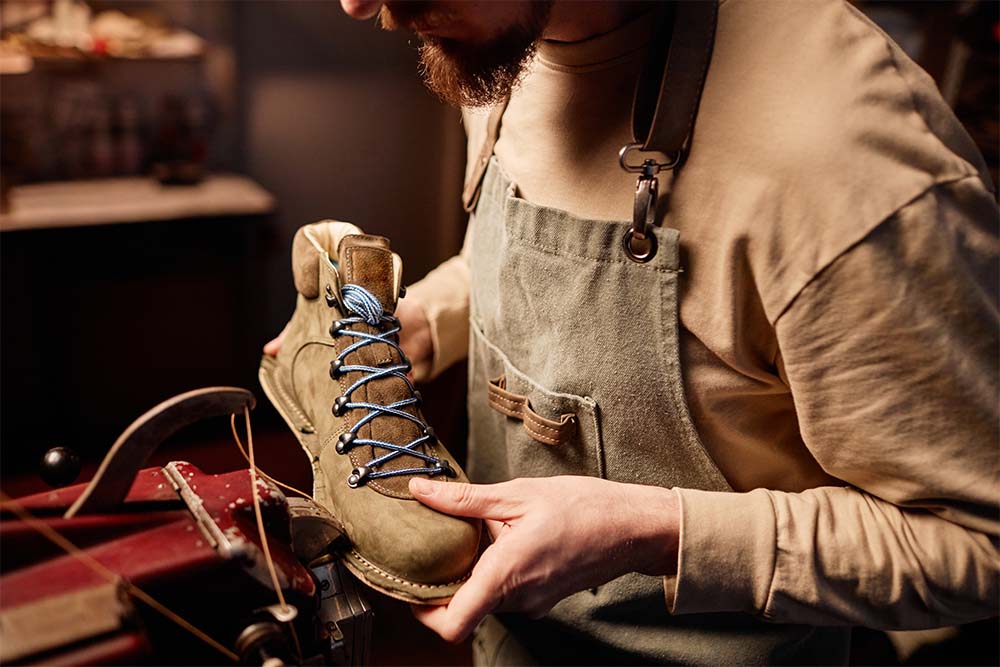
Hiking clothes from sustainable materials
When it comes to the fabric of clothing, it makes sense that clothes made from natural materials are much more sustainable than artificial materials. I’m personally a big fan of cotton, or to be more precise: of organic cotton. Cotton that is not organic unfortunately has a very heavy impact on the environment and is best avoided. But when it comes to walking or cycling along the Via Francigena, clothing is usually chosen based on their capacity to be water repellent, breathable, and easily dryable. Cotton unfortunately doesn’t really have these characteristics (expect for being breathable) since it gets wet easily when perspiring or when walking in the rain, and then takes ages to dry. Wet clothes also leave us more perceptible to getting sick, which for obvious reasons should be avoided. Technical, water repellent clothing however releases microplastics into our environment, especially when being washed in the washing machine. And although these microplastics often cannot be seen with the naked eye, they are definitely there and through our washing cycles they end up in waste water that then ends up in our rivers, seas, and oceans where they can cause significant damage especially to aquatic animals. A good, sustainable alternative to cotton or mainstream technical clothes are clothes made from merino wool in combination with TENCEL™ lyocell, a fibre of botanical origin derived from wood. This fibre helps to keep your body cool and dry, and guess what? Because of its regenerative nature, this fibre is up to 10 times more ecological than cotton, both in terms of yield of the raw material in the finished product, and in terms of water requirements for its cultivation. I recommend taking a look at the garments of our partner CAMCO, all made from 50% merino wool and 50% TENCEL™ fibres. And the good news is that there is a 20% discount especially for Via Francigena pilgrims!
➡️ Read also: How to choose the perfect hiking clothing
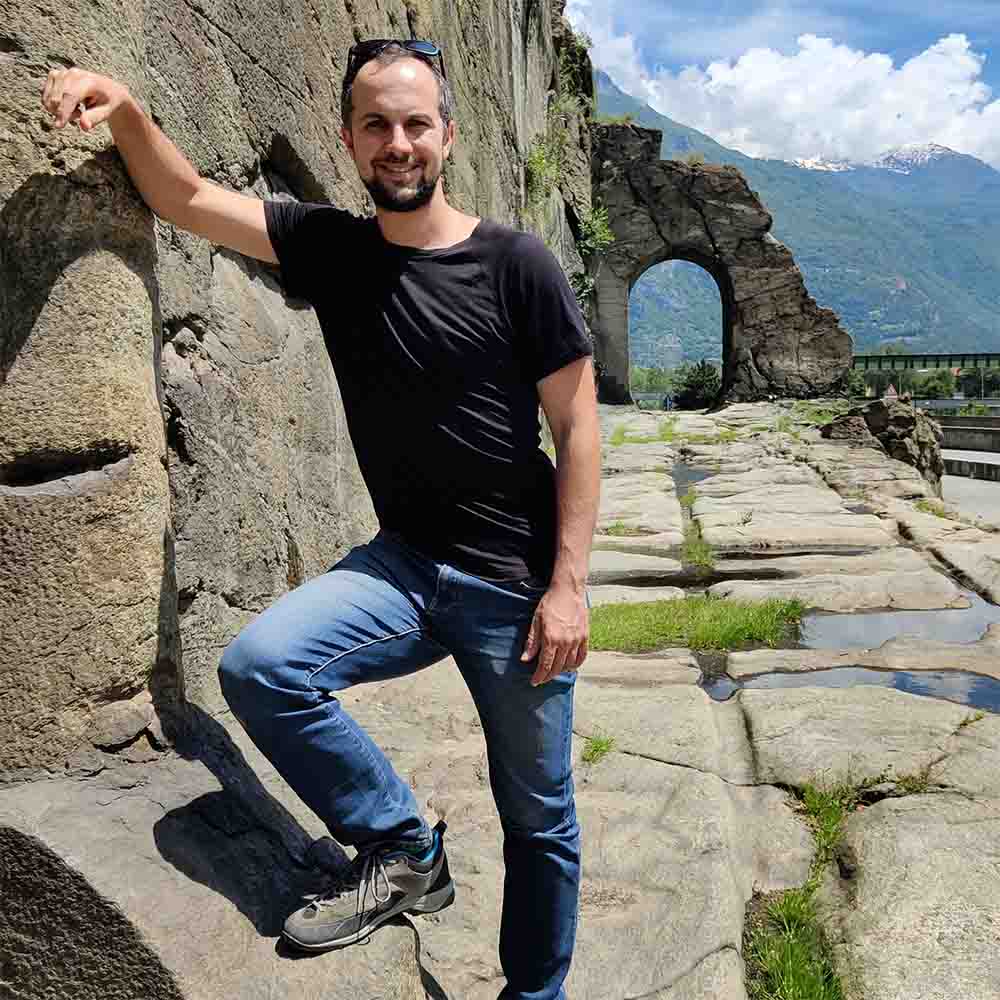
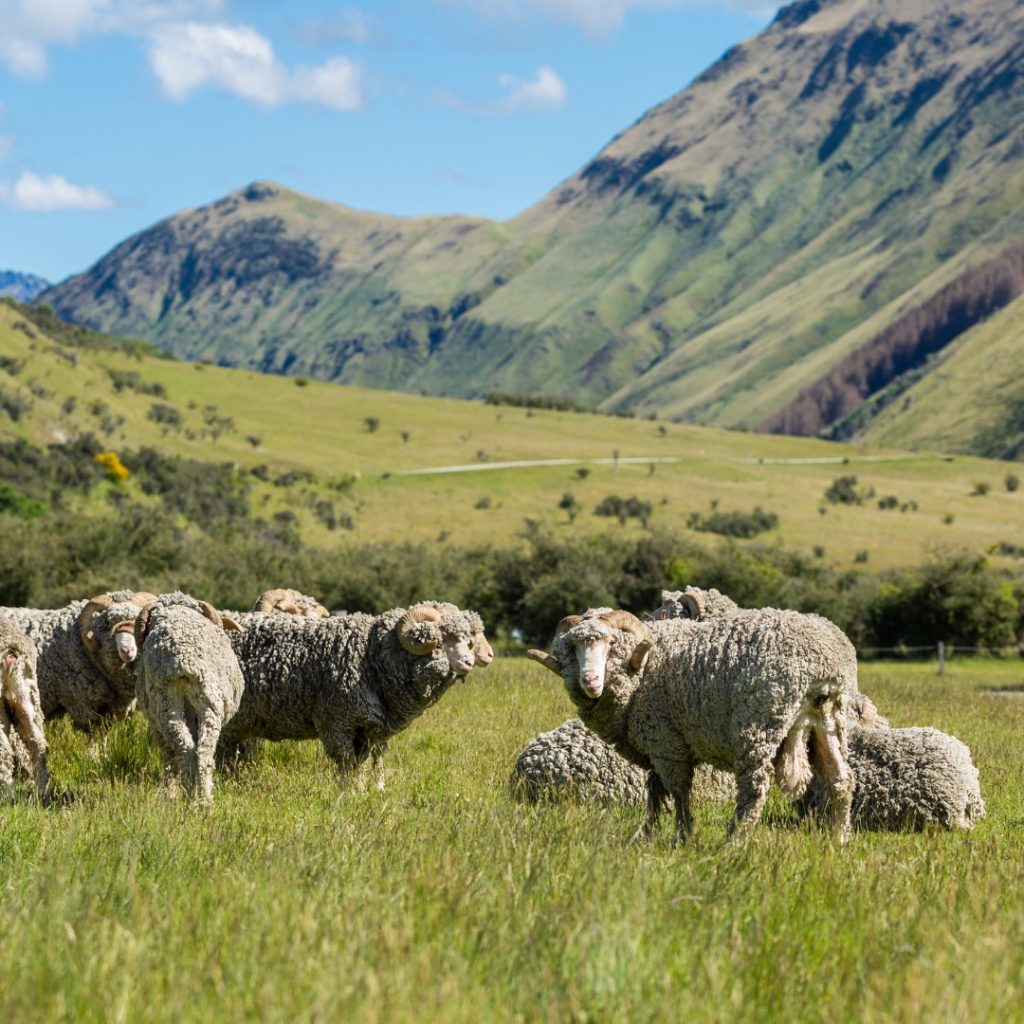
Local delicacies
One of the best things of travelling, in my opinion, is that you get to try out all kinds of local culinary delicacies that you probably wouldn’t be able to find back home. Choosing to eat these local foods is also a sustainable way of getting the nutrients you need to continue your walking or cycling journey. Avoid the big (fast food) chains along the way or restaurants that offer “a bit of everything”. Instead make sure to find a small, local, family-run trattoria that uses local produce which may even come from their very own production. Locally grown produce means that your food didn’t have to travel hundreds or even thousands of kilometres across countries (or sometimes even continents) to end up on your plate, making it more fresh and therefore usually also tastier and healthier.
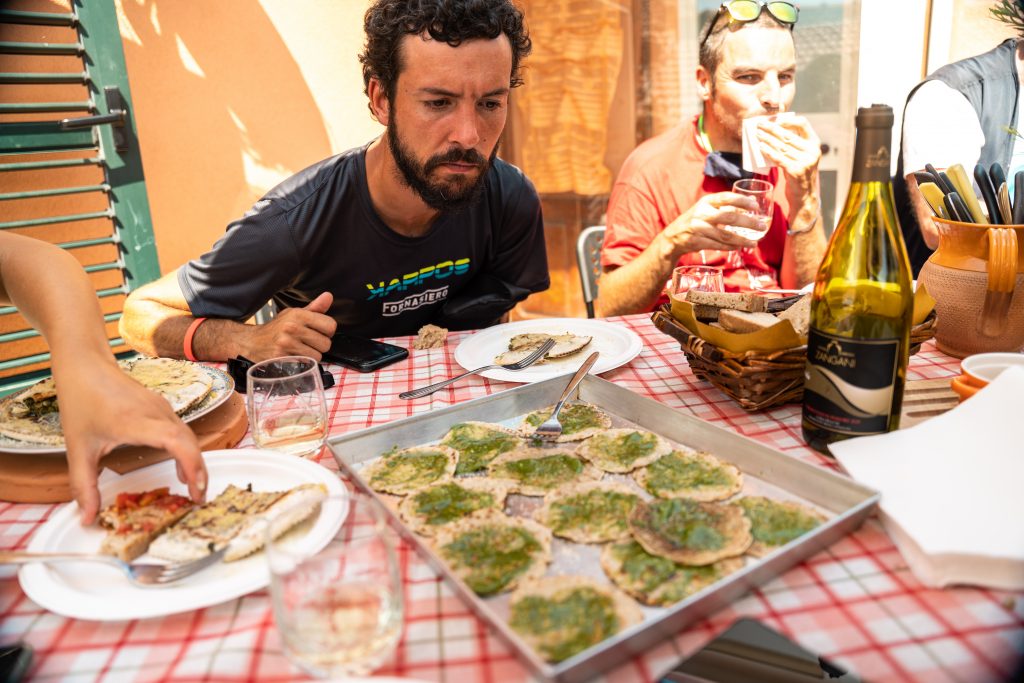
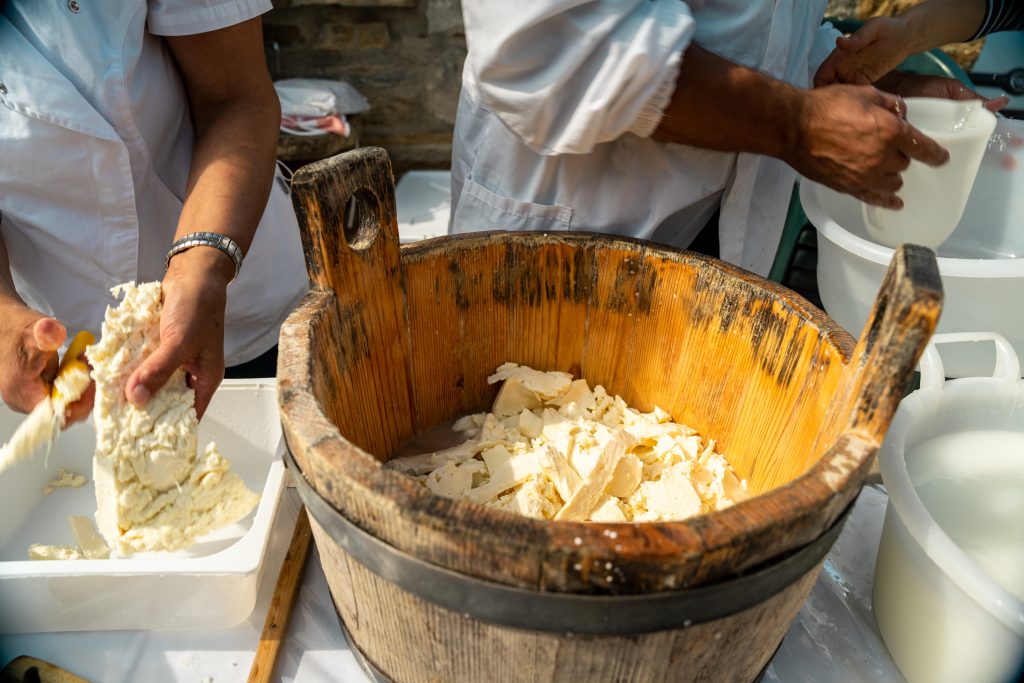
Attention to those small pieces of (plastic) waste
Snacking during a long walk (or cycling trip) is one of the best ways to keep your energy levels up without having a completely full stomach weighing you down after lunchtime. Often however these snacks come in single packaging which can be convenient but is of course everything but sustainable. When choosing your snacks I highly recommend grabbing as much fresh produce as possible, for example fruit that doesn’t require any cutlery and can be easily eaten on the go such as bananas and apples. Single-packaged energy bars can be tasty and easy to bring with you, but as an alternative I would recommend a bar of (organic) chocolate wrapped in paper together with a nice, big bag of nuts which will last you many days in a row. If you happen to bump into a local food market, you could check to see if they are selling nuts by the kilo which will reduce the packaging you use even further.
Before heading off for your Via Francigena adventure you can also consider bringing a small food container with you (or reusable bag) to give to market salesmen to fill up with nuts or other local delicacies without using any (plastic) packaging at all. You’ll be amazed how much single-use packaging you’ll be able to avoid with these simple tips!
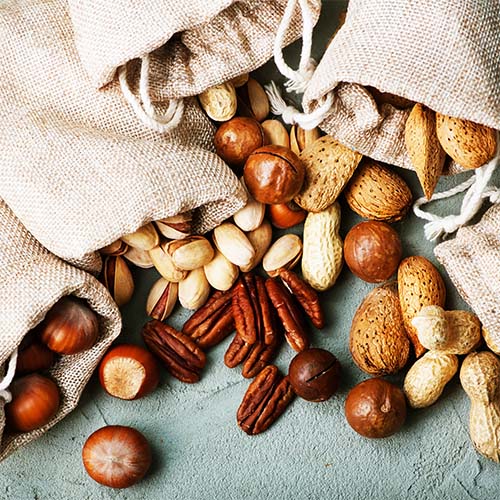
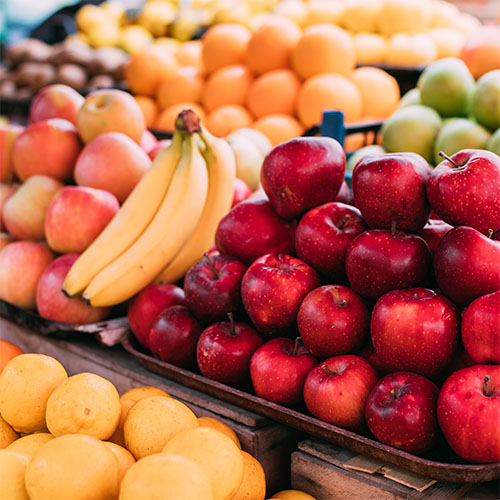
Transport: getting to and from the route
How do you usually reach your starting point in order to start walking or cycling? If you’re doing only a couple of stages in a row and are thinking of taking the car to get to the starting point, you may want to think again! My advice would be to check if there are any public transport options available that can take you to and from the route. For some parts of the Via Francigena where the route crosses rural areas without big(ger) cities and towns this may be tricky, but it’s always worth a try! And while you’re at it: did you know that our Association has partnered up with several (public) transport companies that offer special discounts for Via Francigena pilgrims who have the official EAVF credential? Check out our partner pages for FlixBus, Trenitalia and Trenord for more information and how to obtain your discount.
If you are travelling by bicycle, most regional Trenitalia trains have a special wagon for bicycle transport making is easy to get from A to B with your trusted two-wheeler. Make sure to add a bicycle ticket to your order on the Trenitalia website or app, or at the ticket machine in the station.
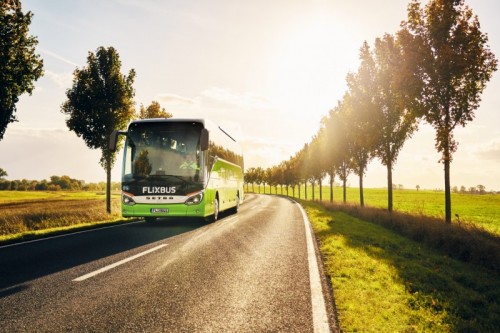
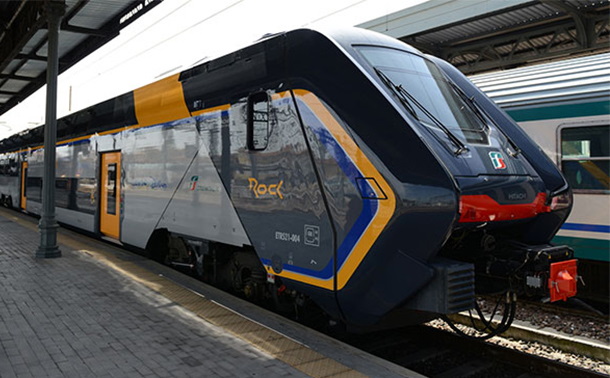
Reduce your water consumption
In the past few years, especially in Italy but also in many other countries around the world, problems of serious drought in summer (but by now also during winter, spring, and autumn) have become more and more frequent. This drought goes hand in hand with higher average temperatures each year, reason why we recommend people to walk the Via Francigena in Italy preferably in spring and autumn, avoiding the very hot months of July and August. Besides posing a threat to our health if not handled with care, these high temperatures also take a toll on the environment. Reducing our water consumption while travelling along the Via Francigena can be a good way to save some water during these drought periods. When I say “water consumption” of course I don’t mean the water you drink during your walking or cycling trip: it’s very important to stay hydrated and to drink enough while exposed to warm temperatures. Ways to reduce your water consumption include closing the water tap while brushing your teeth, instead of just leaving the water run. Or double-checking if you’ve properly closed the water fountains that can be found along the route, which way too often are left open dripping valuable water away. And last but not least, a nice refreshing shower at the end of your sweaty walk is one of the best moments of the day, I’ll be the first to admit that, but know that you’ll get equally clean with a 5-min shower instead of a 20-minute one. Besides being better for the environment, taking shorter showers will also help hostel owners in running and managing their pilgrim accommodations, considering they usually don’t receive any financial help from the government.
